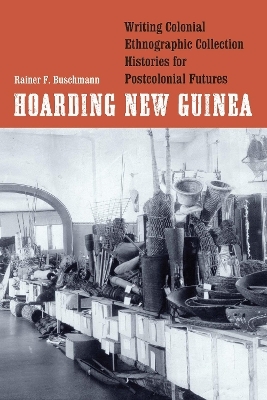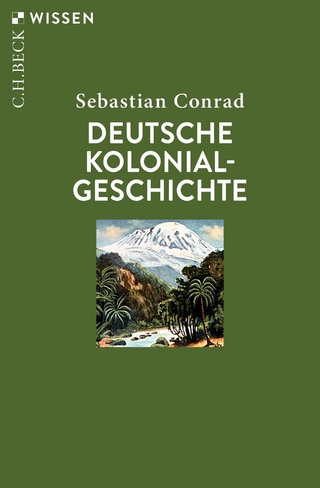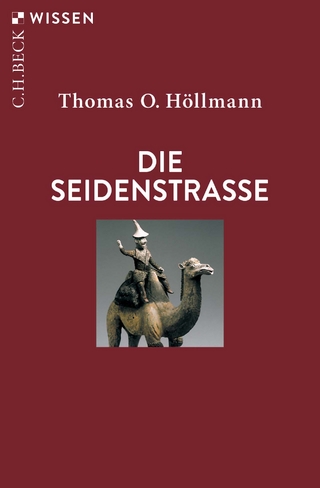
Hoarding New Guinea
Writing Colonial Ethnographic Collection Histories for Postcolonial Futures
Seiten
2023
University of Nebraska Press (Verlag)
978-1-4962-3464-3 (ISBN)
University of Nebraska Press (Verlag)
978-1-4962-3464-3 (ISBN)
Hoarding New Guinea provides a new cultural history of colonialism that pays close attention to the millions of artifacts that continue to serve as witnesses to Europe’s colonial past in ethnographic museums.
Hoarding New Guinea provides a new cultural history of colonialism that pays close attention to the millions of Indigenous artifacts that serve as witnesses to Europe’s colonial past in ethnographic museums. Rainer F. Buschmann investigates the roughly two hundred thousand artifacts extracted from the colony of German New Guinea from 1870 to 1920. Reversing the typical trajectories that place ethnographic museums at the center of the analysis, he concludes that museum interests in material culture alone cannot account for the large quantities of extracted artifacts.
Buschmann moves beyond the easy definition of artifacts as trophies of colonial defeat or religious conversion, instead employing the term hoarding to describe the irrational amassing of Indigenous artifacts by European colonial residents. Buschmann also highlights Indigenous material culture as a bargaining chip for its producers to engage with the imposed colonial regime. In addition, by centering an area of collection rather than an institution, he opens new areas of investigation that include non-professional ethnographic collectors and a sustained rather than superficial consideration of Indigenous peoples as producers behind the material culture. Hoarding New Guinea answers the call for a more significant historical focus on colonial ethnographic collections in European museums.
Hoarding New Guinea provides a new cultural history of colonialism that pays close attention to the millions of Indigenous artifacts that serve as witnesses to Europe’s colonial past in ethnographic museums. Rainer F. Buschmann investigates the roughly two hundred thousand artifacts extracted from the colony of German New Guinea from 1870 to 1920. Reversing the typical trajectories that place ethnographic museums at the center of the analysis, he concludes that museum interests in material culture alone cannot account for the large quantities of extracted artifacts.
Buschmann moves beyond the easy definition of artifacts as trophies of colonial defeat or religious conversion, instead employing the term hoarding to describe the irrational amassing of Indigenous artifacts by European colonial residents. Buschmann also highlights Indigenous material culture as a bargaining chip for its producers to engage with the imposed colonial regime. In addition, by centering an area of collection rather than an institution, he opens new areas of investigation that include non-professional ethnographic collectors and a sustained rather than superficial consideration of Indigenous peoples as producers behind the material culture. Hoarding New Guinea answers the call for a more significant historical focus on colonial ethnographic collections in European museums.
Rainer F. Buschmann is program chair and a professor of history at California State University, Channel Islands. He is the author of several books, including Iberian Visions of the Pacific Ocean, 1507–1899 and Anthropology’s Global Histories: The Ethnographic Frontier in German New Guinea, 1870–1935.
List of Illustrations
Series Editors’ Introduction
Acknowledgments
Introduction
1. The Itinerant Yet Stubbornly Stable European Value of Material Culture, Circa 1870–1920
2. Ethnographic Resident Collection Networks in German New Guinea
3. Contested Indigenous Borderlands
4. Artifact Exchanges along the Ethnographic Borderlands
Conclusion
Appendix: Three Ways of Estimating Artifact Extraction from German New Guinea
Notes
Bibliography
Index
| Erscheinungsdatum | 25.05.2023 |
|---|---|
| Reihe/Serie | Critical Studies in the History of Anthropology |
| Zusatzinfo | 24 photographs, 2 illustrations, 5 maps, 3 graphs, 1 appendix, index |
| Verlagsort | Lincoln |
| Sprache | englisch |
| Maße | 152 x 229 mm |
| Themenwelt | Geisteswissenschaften ► Geschichte ► Regional- / Ländergeschichte |
| Geschichte ► Teilgebiete der Geschichte ► Wirtschaftsgeschichte | |
| Sozialwissenschaften ► Ethnologie | |
| Sozialwissenschaften ► Soziologie | |
| ISBN-10 | 1-4962-3464-2 / 1496234642 |
| ISBN-13 | 978-1-4962-3464-3 / 9781496234643 |
| Zustand | Neuware |
| Haben Sie eine Frage zum Produkt? |
Mehr entdecken
aus dem Bereich
aus dem Bereich


